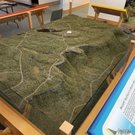Wood walks to celebrate forests and discuss threats
To the Editor:
Are New York’s Forests an endangered species?
Recent studies by Cornell University and The Nature Conservancy have concluded that up to 70 percent of our state’s forestland is not regenerating itself. Since our current second-growth forests are entering the last quarter of their life cycle, this is a problem that should concern every New Yorker.
Our forests provide critical services to the ecosystem, including the purification and holding of fresh water and the prevention of soil erosion. A single mature tree can absorb and sequester 48 pounds of carbon dioxide per year and produce enough oxygen to meet the needs of two people.
Forests provide varied habitat for countless species of wildlife, and recreational opportunities and aesthetic values that contribute greatly to our quality of life. Forests also provide important economic benefits to the state. The forest-products industry employs more than 60,000 people and contributes almost $9 billion per year to the state’s gross annual product.
Forests cover 65 percent of our state; losing them would be unimaginable.
Most of our current forests developed as farmlands that were abandoned, starting in the late 1800s. During the last half of the 20th Century, in the absence of natural predators, white-tailed deer populations exploded to levels far exceeding the carrying capacity of the forest.
In many woodlands, the deer consumed the entire understory of the forest, including seedlings and saplings of desirable tree species. In some cases, the natural understory has been replaced by undesirable vegetation not eaten by deer, and this vegetation is so well established that it prevents the germination of tree seeds and the establishment of viable tree seedlings.
Aggressive management action will be required to address this problem before the seed trees are gone. Deer populations will have to be significantly reduced in some areas, or the deer will have to be fenced out of woodlands where forest regeneration is being attempted, an expensive alternative.
Broad use of forest herbicides approved by the federal Environmental Protection Agency will be necessary to control interfering vegetation. Appropriate silviculture practices, including heavy thinning of the existing forest may be required to admit the sunlight necessary to establish the future forest.
Eighty percent of New York’s forestland is privately owned, and forest owners will need the public’s understanding of the measures necessary to establish the next forest, and will need cost-share assistance from established state and federal programs in order to succeed.
In conjunction with our 50th anniversary, the New York Forest Owners Association announced the “Restore New York Woodlands” campaign to engage and educate other RNYW forest stakeholder organizations and the general public about the issue and solutions.
The association’s 10 regional chapters will host public woods-walks in May and throughout the year to celebrate the many benefits of our forests and discuss the threats they face. Go to our website at www.nyfoa.org to find more information about the forest regeneration problem and the locations of woods-walks planned in our area.
Jim Minor, president
Jerry Michael, director
New York Forest Owners Association
